When I first reviewed the Audeze LCD-2 in October 2010, I knew there was something special about Audeze. I had concluded in that early review of the LCD2 that the company would be innovative and could possibly be the benchmark that others would have to follow. The growth of Audeze in the time since the LCD-2 was introduced has been explosive.
Alex and Sankar had full time day jobs when they started Audeze. The normal wait time for an LCD-2 back then was in the 8-12 week time frame. The product had drawn enormous support from the headphone community. The years that followed were consumed with more research and product development. Move forward to 2014 and both Alex and Sankar are now working full time on Audeze. They have both left their day jobs and the headphone line has continued to grow and expand. The reason for their success is that their planar technology has been hard to duplicate, let alone compete with. Their products have matured and are continuing with new ideas. They have truly become a benchmark in the industry.
Looking at the newer product line you can see the innovation. The headband design has been refined. The new headband is much more durable and more stylish. The ear pads are among the most comfortable of any headphone manufactured today. And the newer designs are also better sounding.
Fazor technology to the LCD’s has brought along a new horizon and more (if you can believe) refined sound to their products. Gone is the relatively small soundstage of previous Audeze models. It is replaced with a deeper soundstage with much more air and depth thus making the LCD X and XC flexible for use with all types of music, including full-scale symphony recordings. The dynamics are greatly improved and there is a new sense of air and space that was missing in the previous offerings. Sankar has told me that the LCD-X was the best-measured headphone Audeze had ever created and after listening at the CanJam 2013, I knew that they were going to be a huge success.
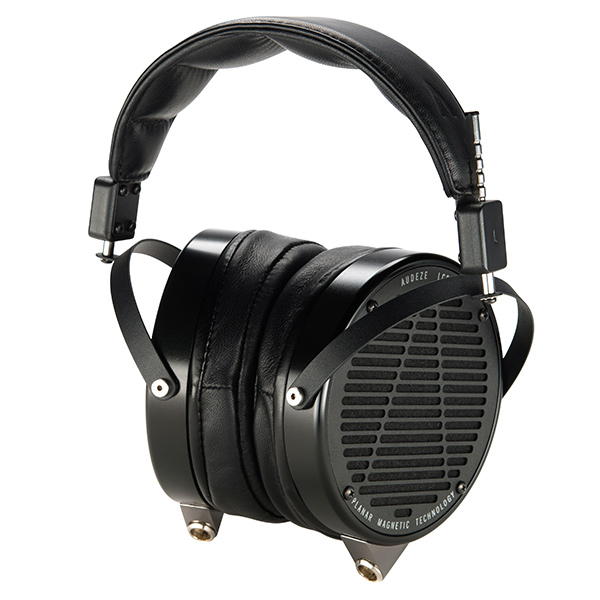
Design…
The Fazor technology is described in detail on the Audeze website. Audeze states that the fazor element improves clarity and focus and thus has better imaging. They place two Fazor elements outside the two magnet structures that surround the diaphragm to achieve this. The Fazor technology guides and manages the flow of sound around the magnets. The website has a white paper to fully explain the technology for anyone interested in digging deeper into the design (Audeze has a patent pending on this technology).
As you will see, the LCD-X and XC are quite similar in their design, starting with the fact that they both utilize the same drivers. The LCD XC has closed bubinga wood cups with the black aluminum enclosure is similar on both headphones. The LCD-X and XC are also both incredibly efficient. The efficiency is 95DB/1mw. The weight of the LCD -X is 600g and the XC (wood cup) is 650G. And they both are heavy headphones. The LCDX and XC are both 20-OHM headphones and will see sonic improvement using amplifiers with more power. They can handle 1-4 watts easily and can be used with amps that put out a maximum 15W.
Both headphones use high grade-Neodymium magnets in the design. Included with each headphone are balanced and single ended cables. The package includes the travel case and wood care kit for the XC for $1799 and the LCD- X for $1699. Audeze also includes a 1.4 to 1/8 stereo adapter.
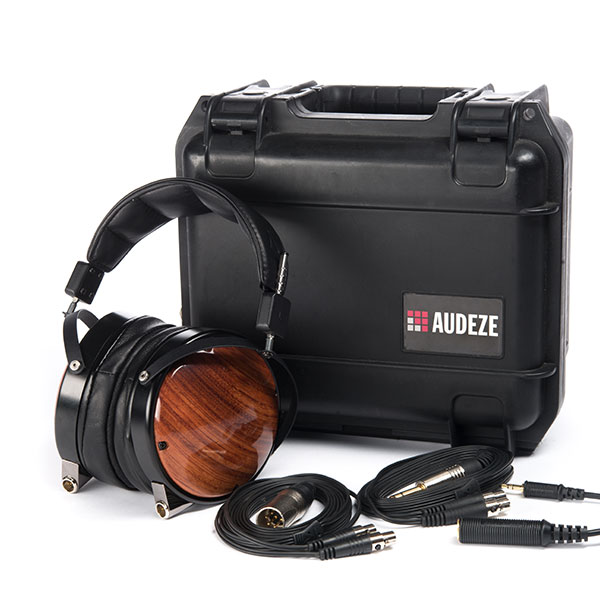
Sound…
The LCD-2 that I reviewed in 2010 had enormous bass yet lacked air and instrument separation. The soundstage was small and listening to music felt as if you were in a small jazz club. They were extremely focused and had the best quality bass of any headphone on the market. The headphone was well received but many felt that they needed a better soundstage with more air and instrument separation.
The LCD-X and XC with Fazor technology have achieved a new dimension in soundstage for Audeze that was not audible in their prior offerings. The sound is not only wider but it is much deeper. The separation between instruments is also much better. The LCD-X because of its open design sounds bigger and better with separation. I can hear further into the recording as there is more air between the instruments. The XC gives the listener more isolation and is obviously better suited for closed listening.
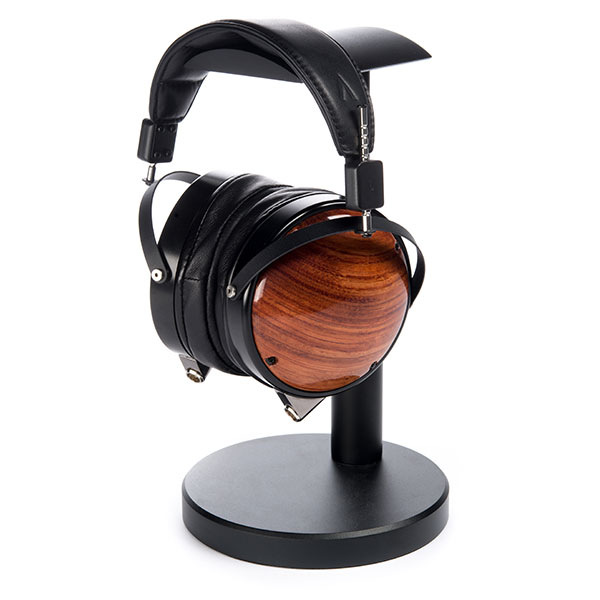
My experience with closed headphones is that they typically cannot compete with an open sounding headphone in terms of soundstage depth. The open designs sound more expanded and the instrument separation is usually superior.
Lucinda William new album, Down where the Spirit Meets the Bone, is a double album with songs written by Lucinda exploring her life. It is a very personal album that deals with her feelings on depression and world circumstances. The recording is exceptional and the LCD-X allowed me to get involved with the music and the message it was delivering. As “When I look at the World” was playing I had to stop what I was doing because I was so drawn in into the music. The LCD-X had disappeared and before me was Lucinda with her performance.
This song talks about her life experiences looking at the world in all its glory and then she talks about it being a different story. The emotional involvement of this song made me think of similar circumstances in my life. The recording had me so engrossed with the performance that it brought tears to my eyes. The music just flowed and I felt as if the headphone evaporated. I could not stop focusing on Lucinda’s vocal. Switching to the XC gave me the same emotional response and blocked out all the outside noise in my listening room but it did keep me focused and involved with the music.
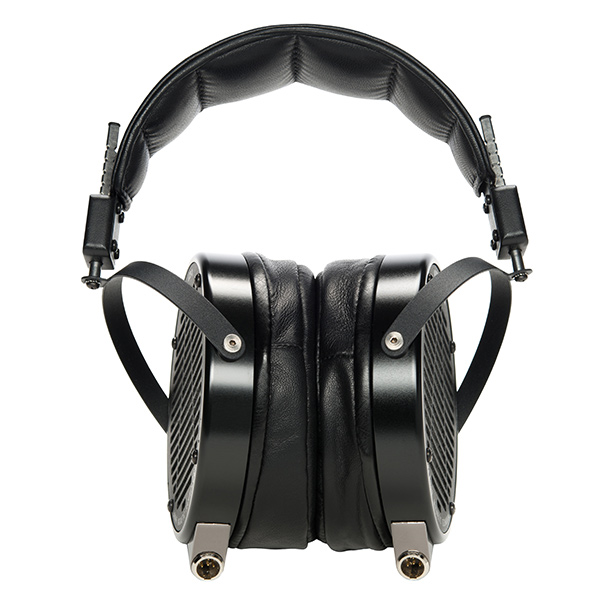
The next track “Walk On” had the same type of emotional involvement. The LCD- X and XC had that rare ability to let you completely forget about the headphone. The presentation is so balanced and neutral. The midrange is as good as I have heard in any headphone regardless of price. The bass hit hard and was extended. The treble is also extended but sounds very pristine. There was no harsh tones or overlay in the X and XC sound signature. The XC could get a little bright at times because of the closed cups (resonance).
The Viva Egoista was designed and voiced with the LCD-3 and does not disappoint with the LCD-X and XC. The sound coming from both headphones using the Egosita is musical and detailed and tonality is exceptional. The 15W beast gets the most out of what both these headphones have to offer.
Using the Nordost Heimdall cable on the LCD- X really showcased the headphone and brought out it’s finest performance. The Viva and Heimdall opened up the soundstage and increased the transparency more so than Violectric V281. The V281 amplifier is a fully balanced design and sounded exceptionally transparent and had enormous bass with good midrange transparency but still was not quite as vivid as the Egoista The big Egoista opened the soundstage further and extracted more from the recordings and Lucinda’s vocal became more focused and the soundstage was more 3-D like.
Closing my eyes and carefully listening I could hear more detail and a clearer window into the music. The space and depth of the soundstage was better than most other planars and while still not quite as wide as the HD800 it had increased transparency and more bass slam. The sound was exceptional. The XC did as well with both amplifiers. Using the Wywire Red single ended cable and the Nordost Heimdall balanced for the V281 amplifier were major improvements over the supplied stock cables. The music was clearly more focused with both of the upgraded cables.
The Violectric V281 balanced amplifier, priced at $1889, puts out over 4 watts of power in a fully balanced configuration. The amp never embarrassed itself with either headphone and is an exceptional match for both headphones. The amplifier was very synergistic with the LCD -X and XC. The bass was explosive on both headphones and the V281 delivered dynamics with explosive speed that is necessary to make performances believable.
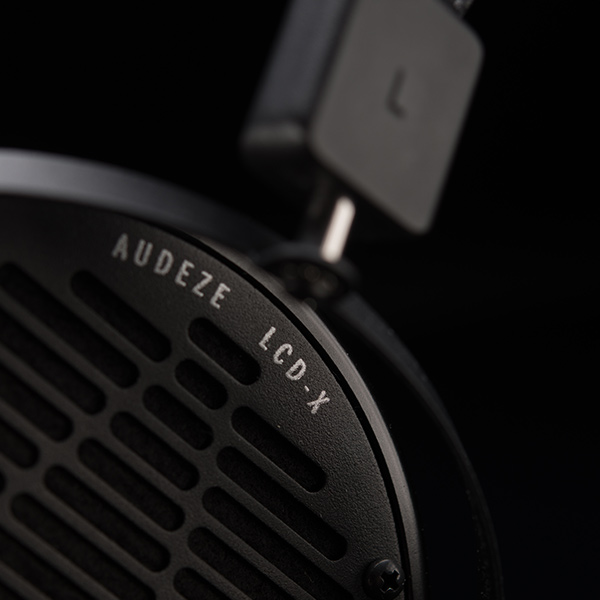
The Sonny Rollins recording, Way out West, is a classic jazz recording that was recorded with a left and right separation typical of early jazz recordings. The Egoista showcased the treble extension of both headphones with Sonny’s crisp sax playing coming to life. Rollins was coming out of the left channel crystal clear. The Bass and drums on this recording were to the right. The bass was fully extended and drums were shimmering. The detail coming from the LCD-X and XC was excellent. I could here the drum cymbals with shimmer and clarity.
Switching to the new IHA-1 from Inspire ($1599), designed by legendary designer Dennis Had, was another excellent match for these headphones. I could still hear the speed and transparency that was evident with the Egoista and V281 amplifiers. The extension and crystal clear notes of the acoustic bass were all there in a vivid life like presentation. I could hear Rollins breathing into his sax and also the stop and start of the music was fast. The track never missed a beat.
The track “I’m an Old Cowhand” was more of the same (in a good way). The LCD X and XC was so good at presenting the recording with utter transparency, more so than any other Audeze headphone I had used previously. The emotional involvement of the LCD X and XC is right there amongst the finest flagship headphones being produced today.
With the LCD-2’s, the biggest enjoyment for me was on female vocals. The LCD-2 was so good with reproducing a female vocal (hardest to reproduce). The magical sound of female vocals from the LCD-2 still comes to mind and the X and XC delivered all of that magic once more with the same transparency and lifelike realism of the LCD-2.
Listening to Ella Fitzgerald and Louis Armstrong from their Verve recordings the duo made me realize that the soundstage was so much better than any other previous Audeze headphones. “Gee”Baby Ain’t I Good to You” opens with Louis Armstrong distinct trumpet. The sound was as if I was sitting in the jazz club and when Ella’s vocal (big smile) started I knew that the LCD-X was very special indeed. I could hear Louis’ trumpet with musicality only he could provide. Ella’s vocal was more upfront with Luis in the rear and the picture was like a clear window. Missing was the grunge and dirt sometimes visible on a dirty window. The picture was vivid as if the window had been cleaned and a layer of grunge removed so the music was clearer and cleaner than I had felt was missing in this recording on many other headphones in my collection.
“Moonlight in Vermont” made me forget about both the headphones and the system. I immediately became so involved emotionally with Ella Fitzgerald’s voice. That magical feeling than lesser headphones seem to miss was all there in the performance with the X and XC. The sound was romantic and Louis trumpet had air around the instrument and the imaging was exceptional. I could close my eyes and see Satchmo playing the trumpet like only he could play it. It came to life. It was as if I was hearing him in a live setting.
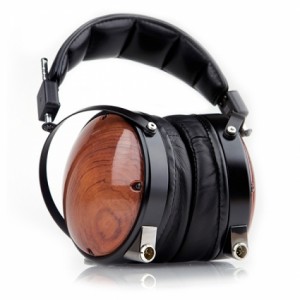
The synergy of both Louis and Ella was so impressive. It was as if they were each in there own space. The special sound and lyrical voicing of Ella’s vocal was always evident. Clearly, the LCD-X and XC still had the magic of the female vocal reproduction that’s was so good with the LCD-2 yet added improved soundstage with more air and separation around the performers and their instruments.
It no longer felt as if I was in a tiny shoebox jazz club. It made me feel as if the room had expanded but the magical voicing of the performers was all there. I could not only feel the room but with both Ella and Louis; the feeing was always special. I could hear things that would be missed with lesser headphones. The gentle blowing of Louis into his instrument and the clear vocal performance of these two legendary performers does not get much better than this on headphones. The recordings are magical and a treasure to witness. Each and every jazz lover should own these historical recordings.
Conclusion…
In 2010 in my review I had stated that there was a new kid on the block. The prediction I had made that Audeze was a major contender and a new benchmark for the majors to follow has come to fruition. Back then they established a product that took the hobby and industry by storm (more like a typhoon sweeping an island).
Are they perfect? Is anything? Well, as with most products, there are always a few things that could be improved upon. The XC has a slight upper midrange resonance that can make certain recordings sound bright and a little rough around the edges. Many closed headphones suffer for the same type of problem. The XC is also the heaviest of any other Audeze headphone and can make many users uncomfortable wearing them for long listening sessions. The LCD X, while still being heavy can be more comfortable to wear for longer periods of time. Since they are open back, the soundstage appears a touch wider and missing is the upper mid range resonance that’s clearly evident in the XC. The LCD- X is also not as warm sounding as the LCD-2 or LCD-3 (non fazor version) for that matter.
The LCD X and XC with the new Fazor technology address the soundstage and added a more vivid picture of the recordings. The air and spacing of instruments that was missing in the LCD-2 is a welcome addition with the newer models. Bass extension is still rock solid. The inner detail of instruments and treble extension is also competitive with any other headphone being produced today.
Audeze continues to push the boundaries and create new frontiers. The LCD-X and XC represent what is so special about planar designs. The speed and transparency (and now coupled with improved separation) is still top shelf, and yes, Audeze is still the benchmark in this industry. On top of it all, the LCD X and XC always managed to keep me engaged in the music. Once again Audeze has raised the bar for other companies to follow.















Reply
Reply
Reply
Reply
Reply
Reply
Reply
Reply
Reply
Reply
Want to join discussion?
Feel free to contribute!